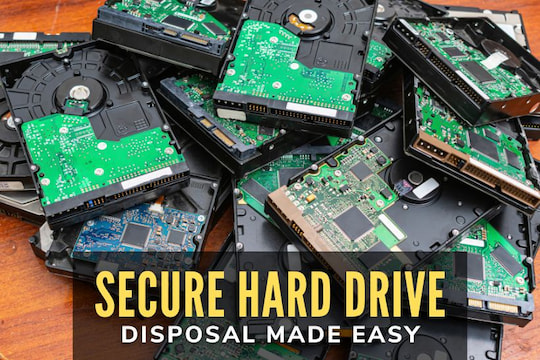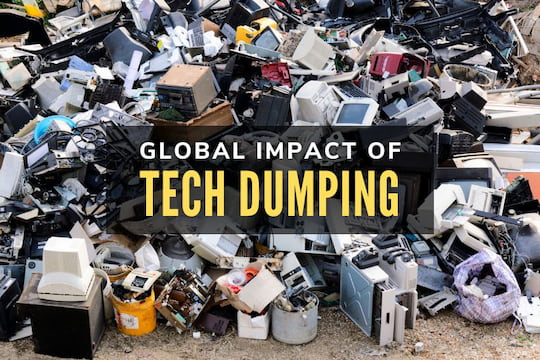In the digital era, securely disposing of hard drives at the end of their lifecycle is essential to protecting sensitive business data. Whether upgrading systems or decommissioning outdated equipment, adhering to best practices for hard drive destruction can safeguard your company from data breaches, regulatory penalties, and other potential risks. This guide provides IT managers in the Los Angeles and Orange County regions with proven methods to ensure permanent data eradication.
Why Proper Hard Drive Destruction Matters?

A common misconception among businesses is that deleting files or formatting a hard drive permanently erases the data. In reality, advanced techniques can often recover this information. Adopting recognized methods for hard drive destruction is critical for preventing unauthorized access and complying with privacy laws.
Best Practices for Hard Drive Destruction
1. Physical Destruction
Hard Drive Shredding: This is one of the most reliable ways to destroy data. Hard drives are broken down into small pieces using industrial shredders, ensuring the data is beyond recovery. This method is fast, effective, and well-suited for companies managing highly sensitive data. Some providers offer mobile shredding for extra security, performing the destruction on-site.
Crushing: Hard drive crushing deforms the drive's platters using hydraulic pressure, rendering the data unreadable. While more thorough than shredding, it remains a viable option for many businesses.
2. Degaussing

Degaussing disrupts the magnetic field that holds the data, effectively rendering it unreadable. However, newer hard drives with protective coatings may resist this method. To ensure maximum security, it is recommended to combine degaussing with physical destruction methods such as shredding or crushing.
3. Data Wiping (Logical Destruction)
Data wiping involves overwriting the drive multiple times with new data, making the original information impossible to recover. To ensure a thorough wipe, businesses should use software that meets industry standards, such as the Department of Defense (DoD) 5220.22-M. Performing this process carefully is essential, as incomplete wiping could leave some data intact.
4. Working with a Certified Data Destruction Service
Partnering with a certified data destruction provider is crucial to maintaining security and regulatory compliance. Accredited companies follow strict protocols and provide documentation, like a certificate of destruction, to verify that hard drives have been disposed of properly. This step is essential for adhering to California's privacy laws and industry regulations.
5. On-Site vs. Off-Site Destruction
On-site destruction allows companies to observe the entire process, making it ideal for businesses handling highly sensitive data. Off-site destruction, while still secure, involves transporting drives to a dedicated facility. Both methods are effective, though on-site destruction offers more direct oversight for IT managers.
6. Compliance with Industry Standards

Ensure your hard drive destruction practices comply with industry standards such as the National Institute of Standards and Technology (NIST) 800-88 media sanitization guidelines. Following these standards can protect your business from legal liabilities and ensure data is fully secured.
Ensuring Data Security
Protecting sensitive business information is critical in today's world. You can ensure your data is permanently unrecoverable by following these best practices for hard drive destruction—whether through shredding, crushing, degaussing, or data wiping. Working with a certified provider adds extra protection while keeping your business compliant with industry standards. Discover our expert data destruction services to keep your company's data safe and fully compliant.




















